Welcome to Stealthy Wood’s journey toward top-notch inventory management! With our company’s rapid growth, the need for smarter inventory control has never been more essential. Handling a rising number of products by hand with spreadsheets? That’s not only overwhelming, but it’s also inefficient. So, we’ve opted for Odoo Inventory, an advanced management software designed to streamline operations, improve accuracy, prevent stockouts, and, best of all, increase profits. Let’s dive into how Stealthy Wood leverages Odoo for effective warehouse management, starting with the essentials: receipts and deliveries.
The Basics of Inventory Operations: Receipts and Deliveries
The Inventory Dashboard in Odoo offers a full view of warehouse operations, enabling us to oversee each step from start to finish. Here’s a closer look at our process, beginning with a typical workflow in sales orders.
Step 1: Creating a Sales Order
Our regular customer, Deco Addict, is a fan of Stealthy Wood’s mugs and orders a few more for their inventory. In Odoo’s Sales app, we create a new sales order for Deco Addict, selecting the desired product and confirming the quantity. Upon confirming, the product quantity is reflected in the forecast report, which shows real-time updates on i ems in stock, items on order, and those consumed by pending orders.
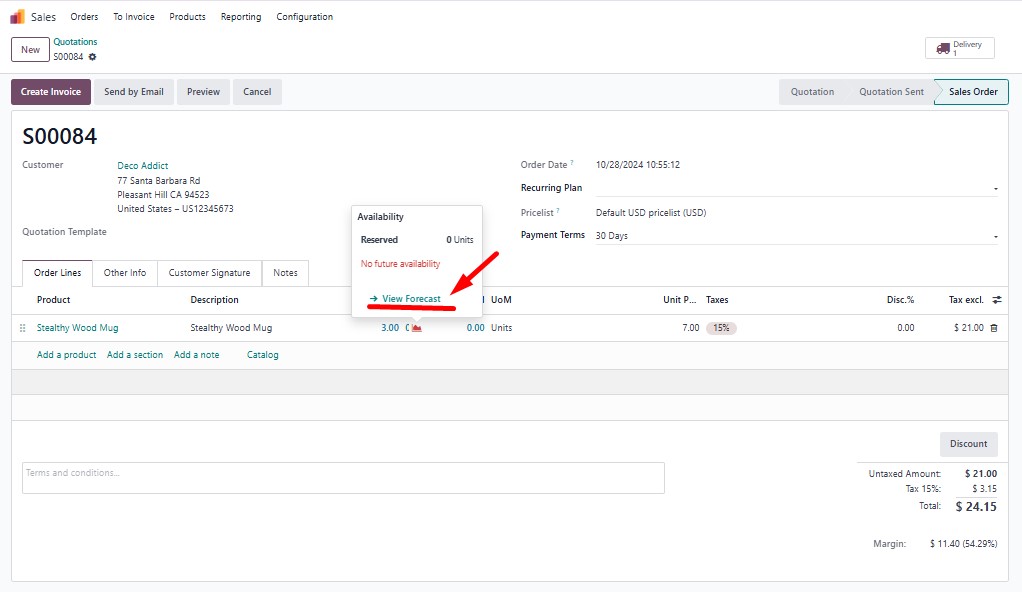
Step 2: Reviewing the Forecast Report
The forecast report gives us an accurate inventory overview, showing us the exact quantity needed for current and future orders. For instance, if we’re short on three mugs, Odoo suggests placing a replenishment order to ensure our stock meets demand. We can view this forecast in real time, helping us see what’s needed to avoid any shortages or delays.
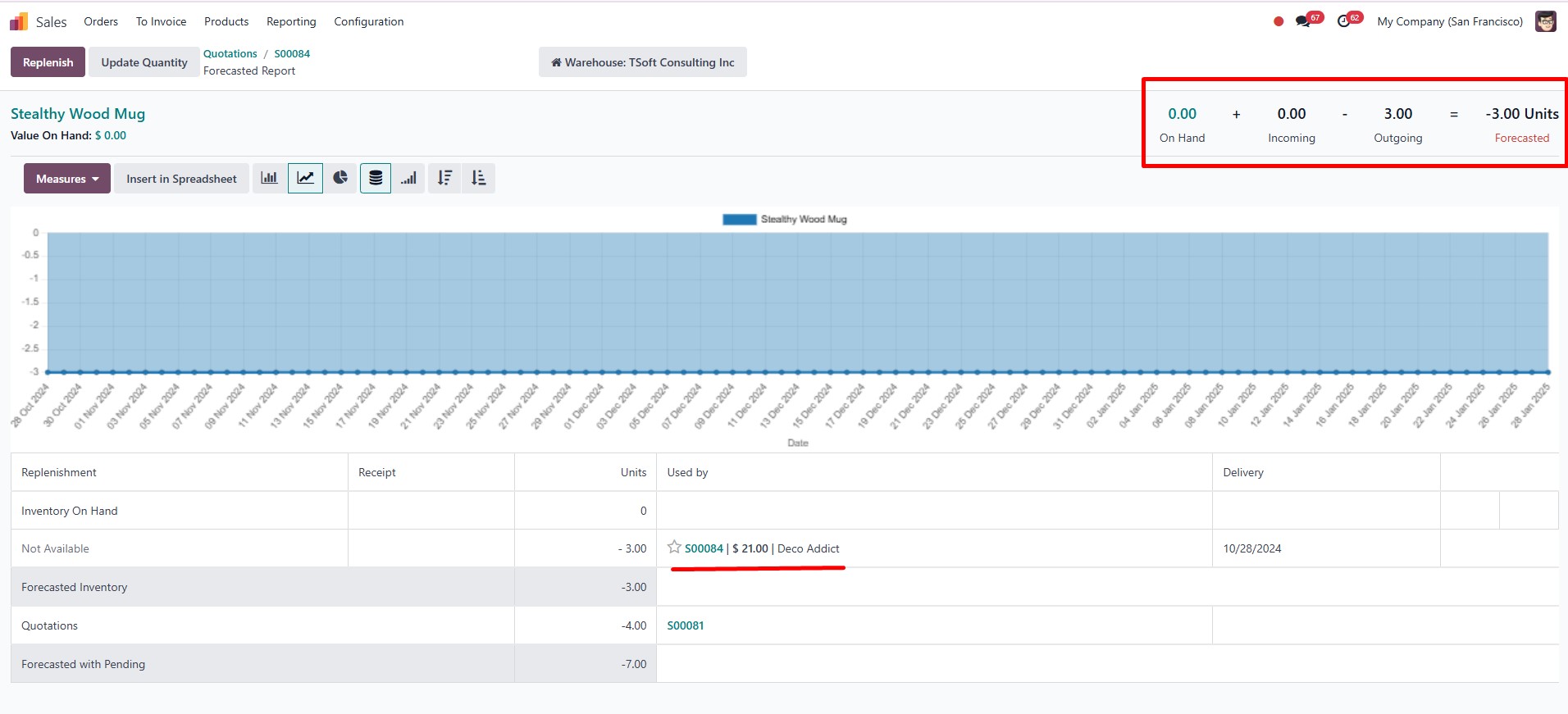
Step 3: Creating Purchase Orders and Replenishment
When stock is low, we can go to the Replenishment Dashboard under Operations in Odoo.
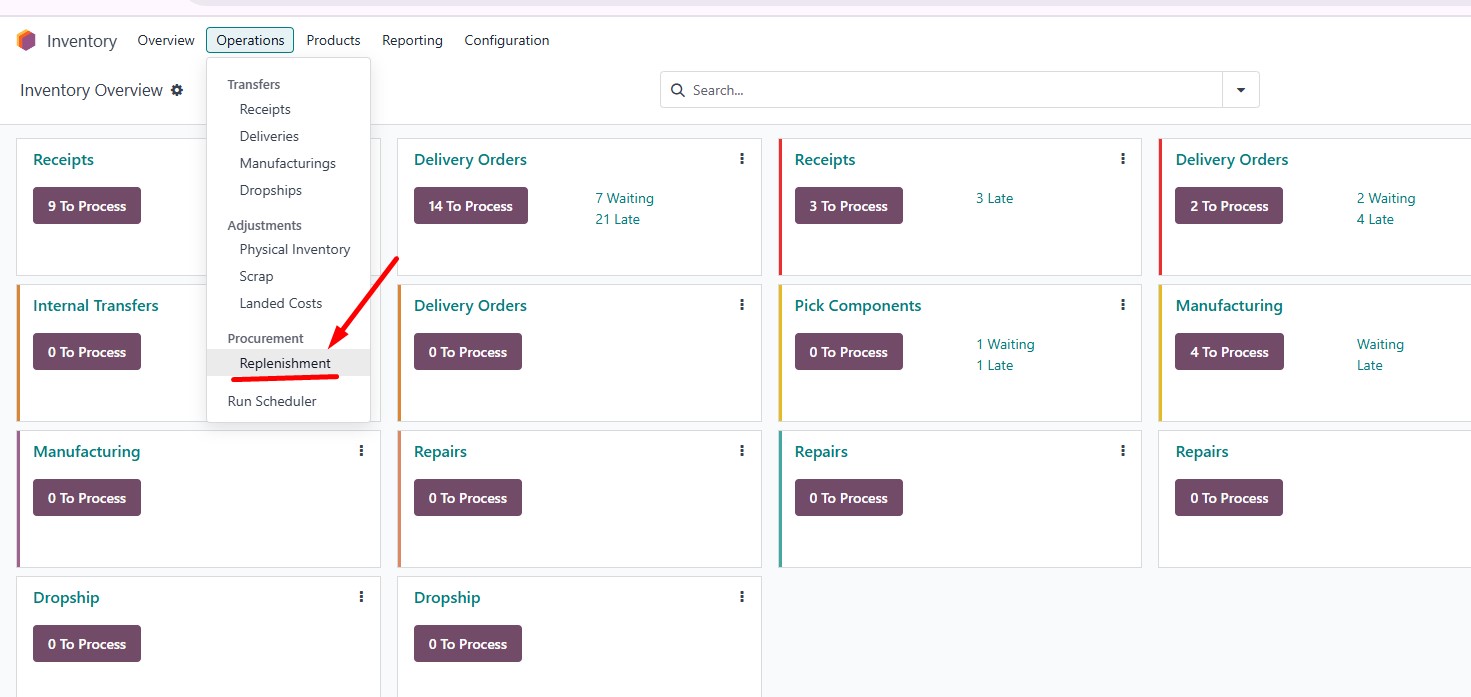
This tool suggests ordering the exact amount of items we need to fulfill our sales orders. By using the Order Once button, Odoo creates a purchase order in seconds.

To ensure we have extra mugs on hand, we can also adjust quantities by navigating to the Purchase app to increase the order from three mugs to five.
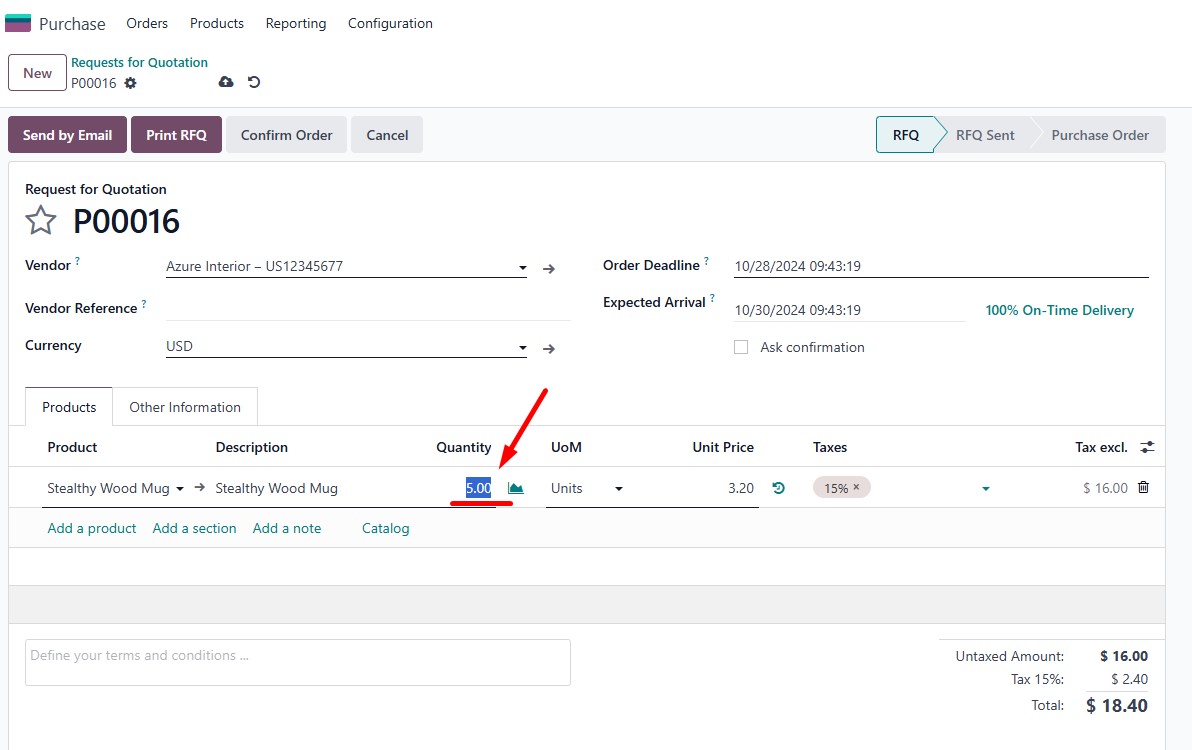
Streamlining Deliveries with Real-Time Updates
Back on the Inventory Dashboard, the Receipts section shows a list of incoming shipments.
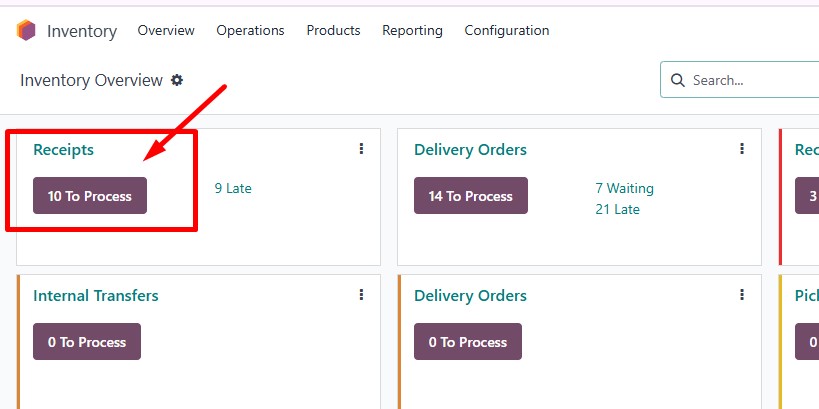
By cross-referencing purchase orders with source documents, tracking our stock becomes effortless.
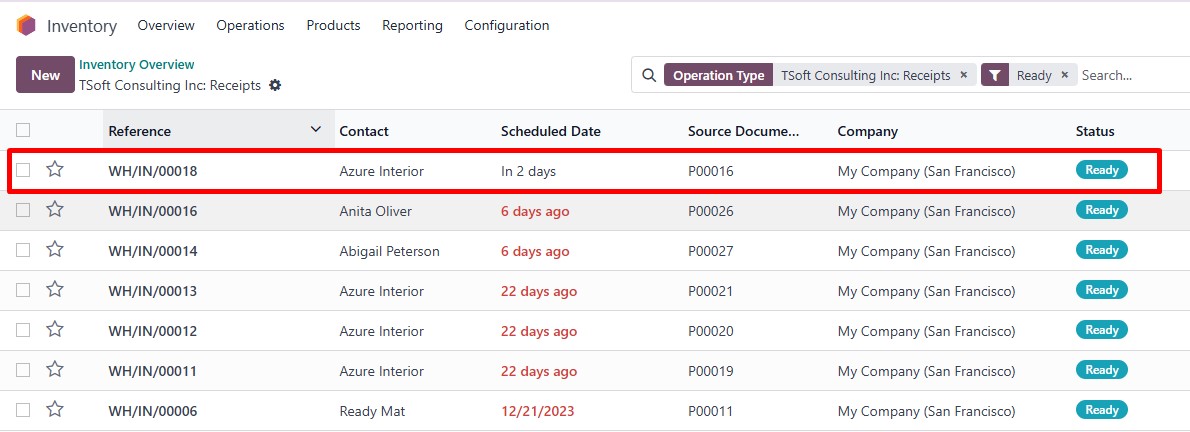
After receiving and validating our incoming mugs, we see that Odoo automatically reserves the necessary three mugs for Deco Addict’s order, protecting against other orders claiming this stock.
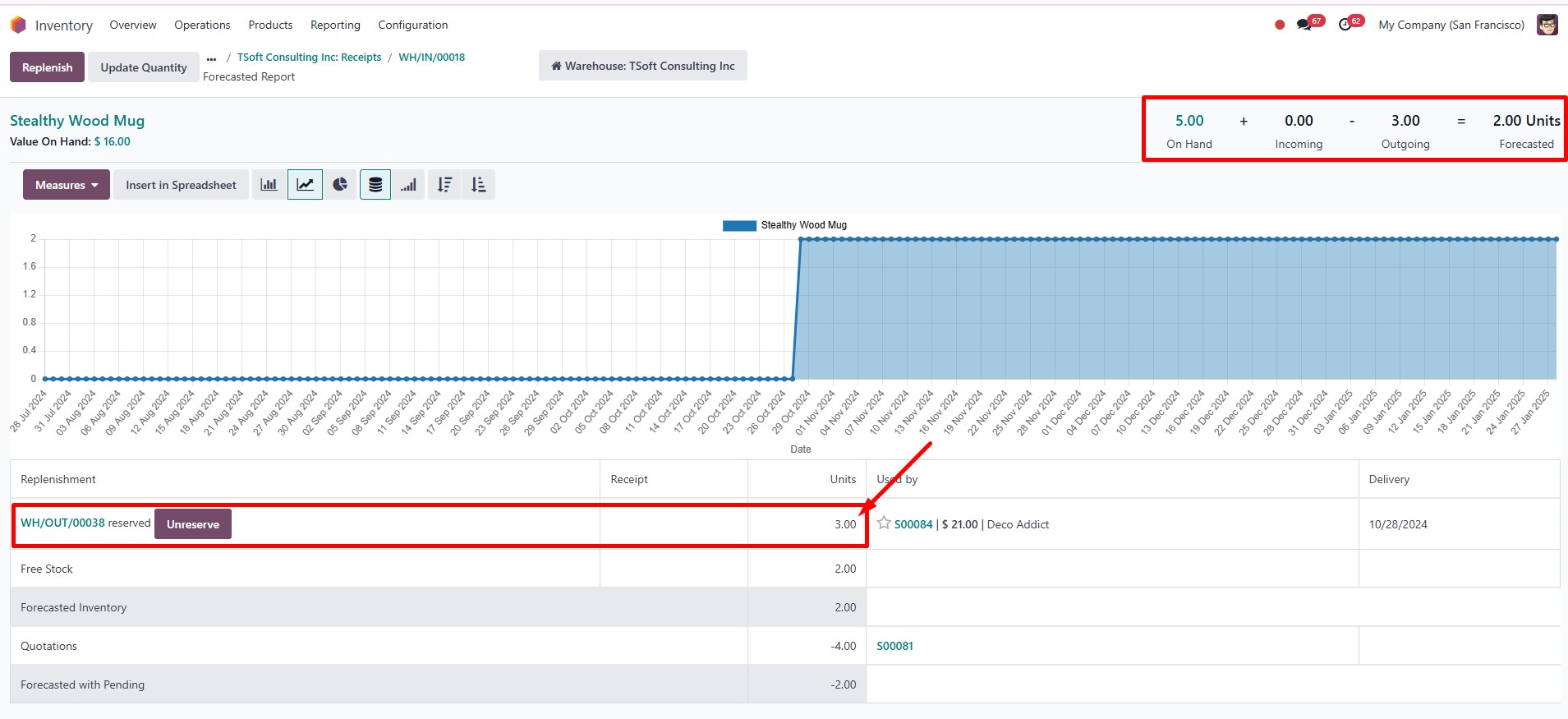
When we’re ready to deliver, we can access the Delivery Order linked to our sales order.
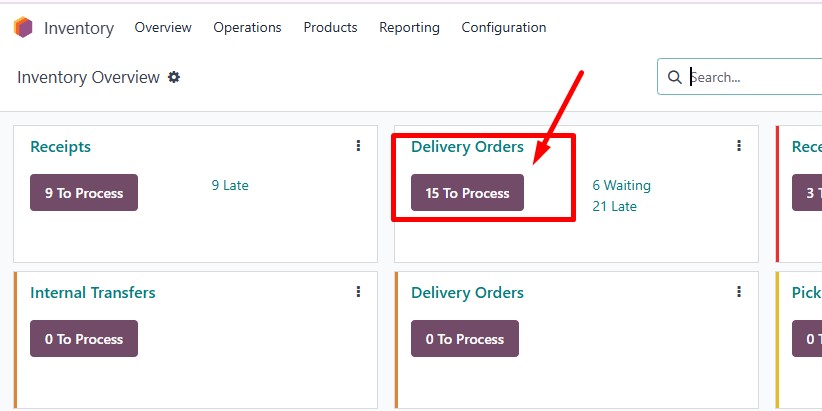

If inventory levels are sufficient, Odoo shows this with a helpful green icon, indicating that the order is good to go.
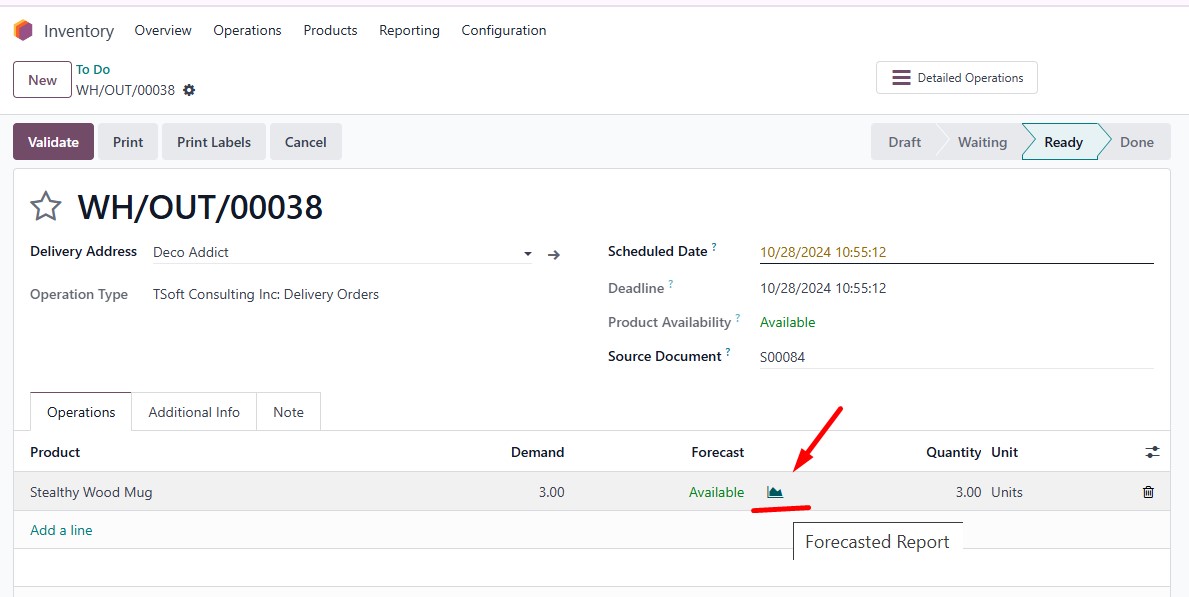
A simple validation completes the delivery.
Handling Shortages and Backorders
But what if we don’t have enough stock on hand? Odoo has a solution for that as well. For example, another customer, Alice Lambert, orders four mugs, but we only have two in stock.

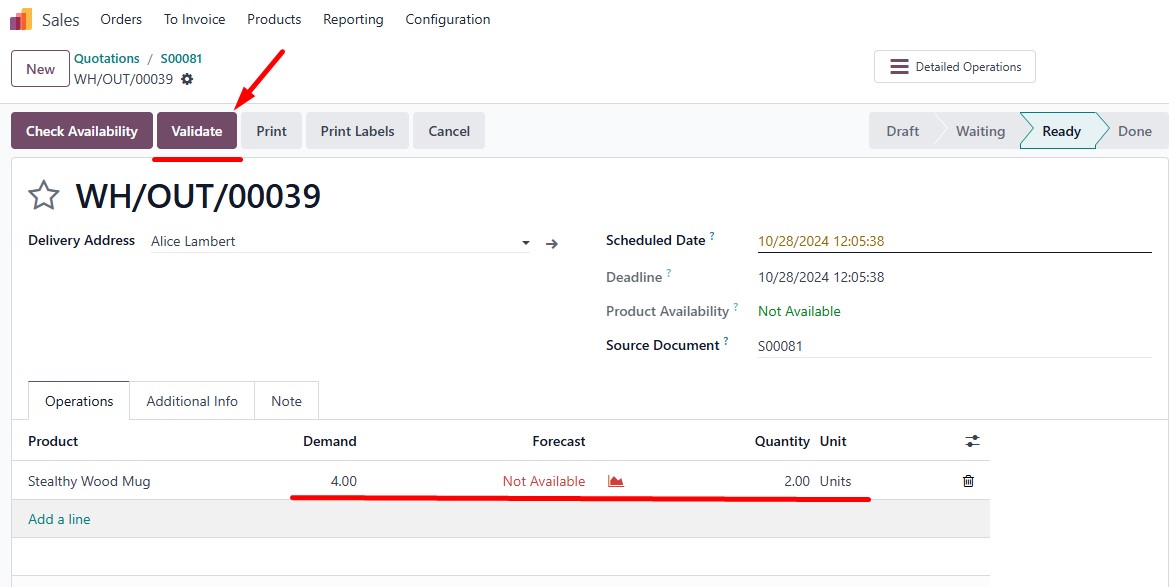
By confirming her sales order, Odoo immediately flags the shortage and prompts a decision: either create a backorder to fulfill the remaining items later or proceed with sending only what’s available.
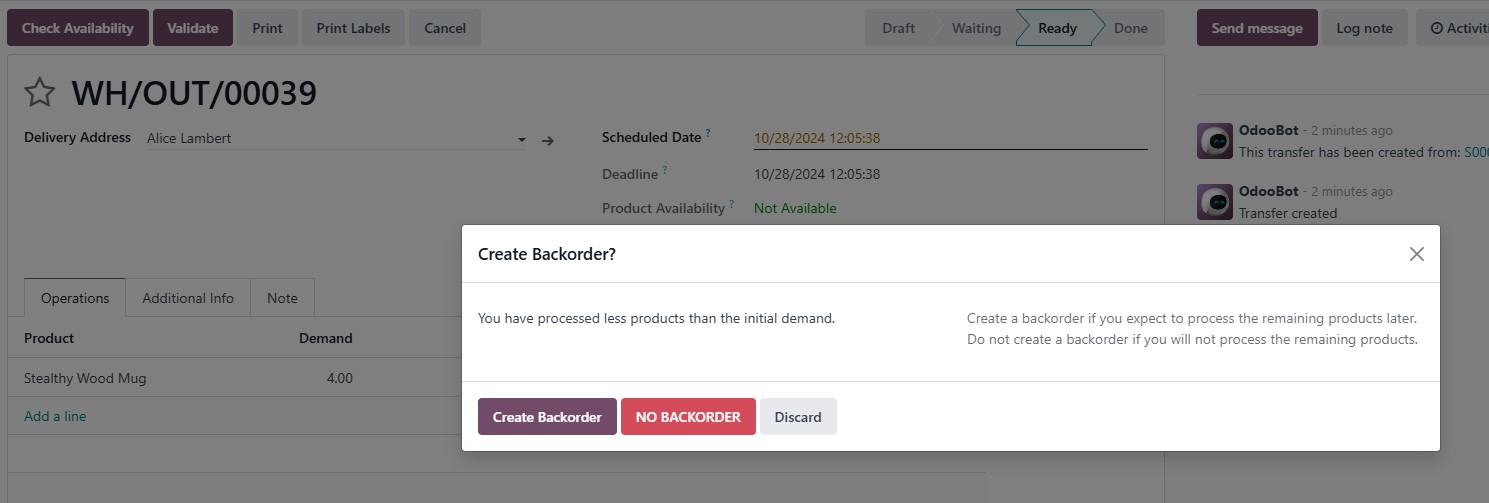
If we opt for a backorder, Odoo automatically generates a new delivery order for the remaining mugs, updating our inventory to show pending items.

This flexibility ensures our customers get their items promptly, even if we’re temporarily low on stock.
Managing Vendor Orders and Lead Times
To replenish inventory, we create a new RFQ (request for quotation) in the Purchase app, selecting a vendor and specifying our desired quantity. Odoo lets us set vendor lead times, giving us visibility on expected delivery dates.
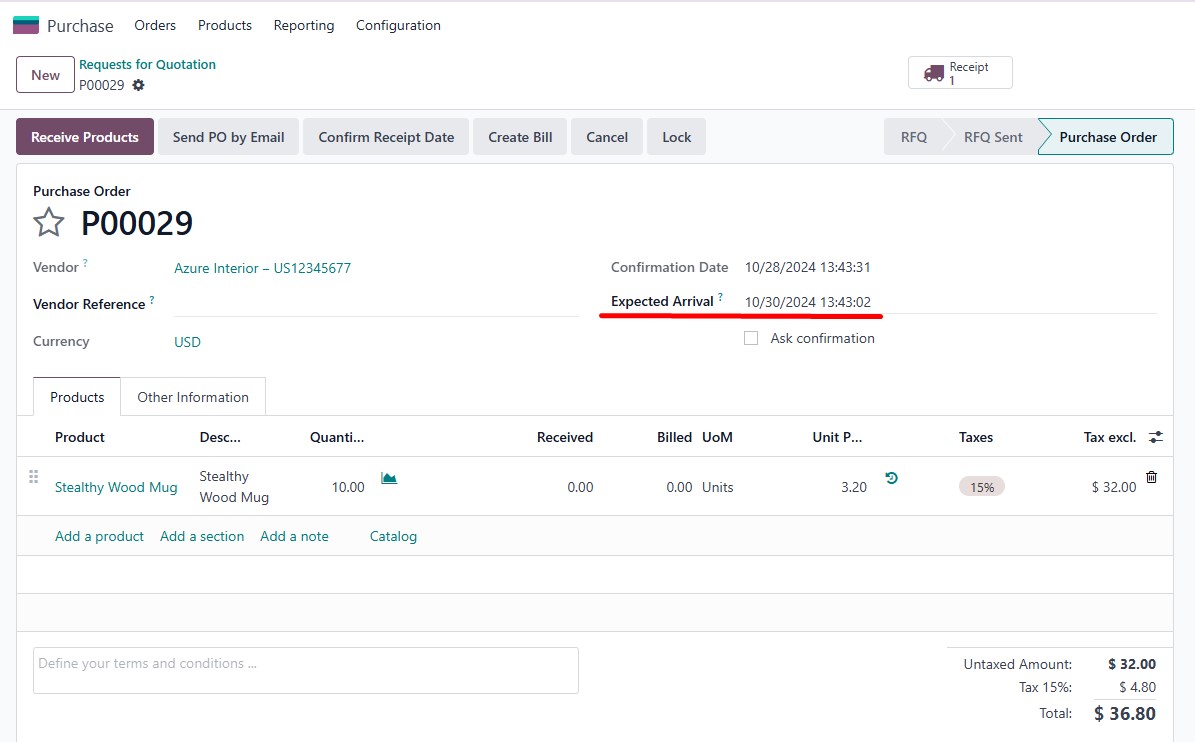
Once the items are en route, we can go back to the Inventory Dashboard and see that our pending backorders will soon be fulfilled.
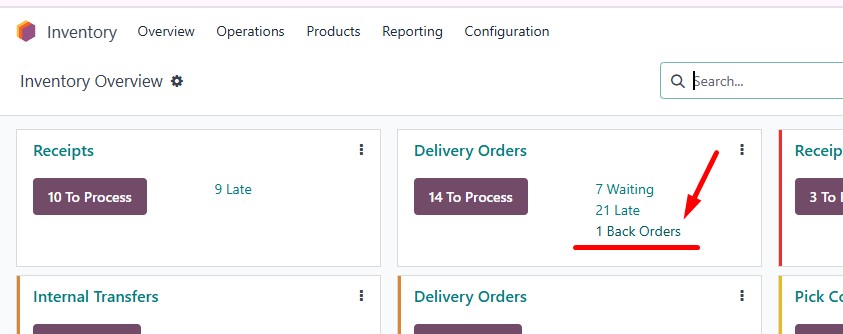
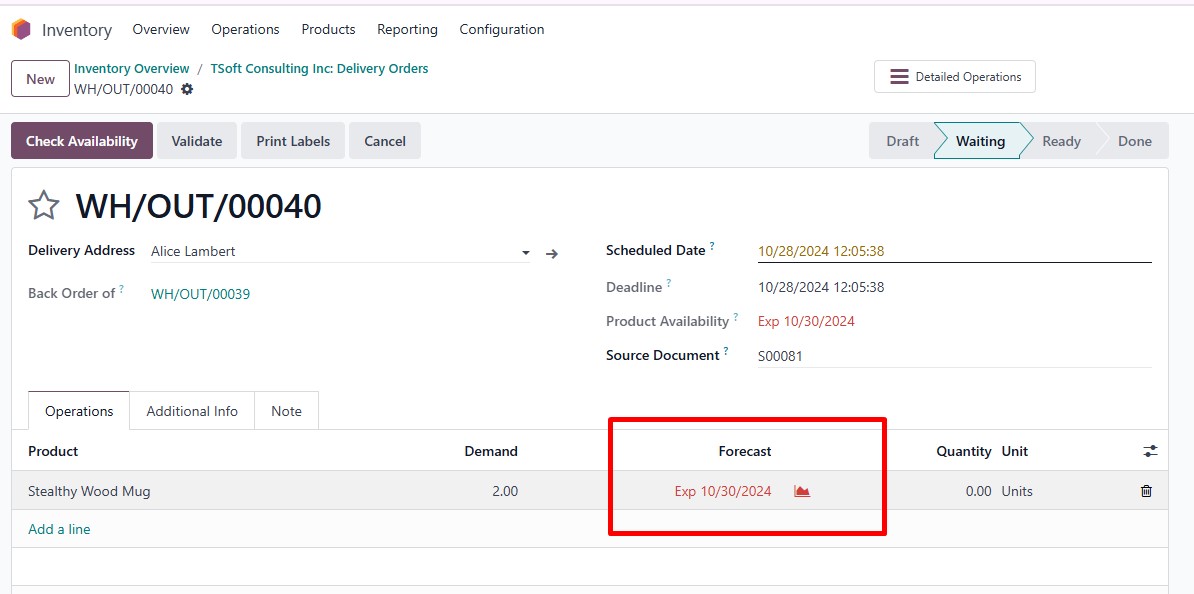
With Odoo, the whole process is easy to manage and track, from ordering to receiving, delivering, and planning for future stock needs.
Conclusion
This tutorial highlights how Odoo supports Stealthy Wood in effectively managing inventory, from receiving shipments to handling backorders and planning for future stock. With Odoo’s Inventory, our operations run smoother, decisions are smarter, and customers are happier.
Stay tuned for more videos and insights as we explore even more ways to make inventory management a breeze. And remember, you’re doing great—grab a snack, and we’ll see you in the next tutorial!